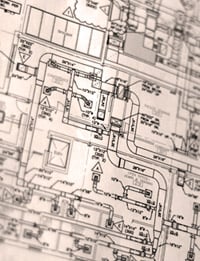We often hear a question that goes something like this from building owners: “Why do I need an independent design review? I hire the best architects and engineers.” It’s a reasonable question — asked so often in my opinion because those of us in the architecture, engineering and construction industries have done such a poor job answering.
First, A Definition

Although design review is a term used in many fields, it consistently includes two elements — independent review of the design against the project’s requirements. A definition that works across fields looks something like this: "A design review is a milestone within a product or building development process whereby a design is evaluated against its requirements in order to verify the outcomes of previous activities and identify issues before committing to, --and if need be re-prioritizing-- further work. The ultimate design review, if successful, therefore triggers the product or building launch. By definition, a review must include persons who are external to the design team."
More than LEED Design Review
In the building construction industry, design review emerged as part of the commissioning process in the late 1990’s. Both the California Commissioning Collaborative and ASHRAE are advocates of design review. It is widely recognized that design review earns credit for Enhanced Commissioning in the LEED green building certification process, but what are the advantages of a design review if yours is not a LEED project? I see four key benefits to including a design review in your commissioning process.
1. One Firm’s Practices or Proven Best Practices?
An independent design review differs from one engineering firm’s internal checking. An independent set of eyes can look beyond the design firm’s internal design practices and office culture by presenting a different method to consider, based on successful implementation of previous projects from designs by multiple firms.
The architecture and engineer (AE) community (just like the construction industry) is slow to change: misapplications from one generation of engineer or project seem to continue to the next. In recent decades, the design fee as a percentage of construction costs has decreased significantly. Engineers now have far less time in their fees for time on job site. And time in the field, especially during startup and operational testing, is where one learns very quickly what works very well and what can be done better during the next design project.
2. Reduced Construction Costs
A design review can add value to the design by reducing construction costs. Here’s an example: Consider the design of a new 10 HP pump, initially designed as a constant speed/constant flow pump. The design engineer assessment concluded: “It’s too small and not worth the cost of adding variable frequency drives (VFD)”. A third party design review would point out it is less expensive to install a VFD than a traditional motor starter. The reviewer would note annual pump operating costs would be cut 62%, avoiding 31,000 kWh a year, while dropping operating costs by $3,700. per year. And that’s not just one year; it’s every year going forward, for compounded savings.
This is true added value by reducing construction costs while concurrently reducing the owner’s overhead for the next 20 years.
Sometimes a reviewer may observe a design may not be in compliance with say, a ventilation code. While the remedy will likely increase construction costs, and possibly operating costs, the high level of indoor environmental air quality can be assured. And that may have a positive impact on productivity. This is a choice the building owner wants to at least be aware of.
3. Varied Perspectives
We each have our unique, individual blinds spots. An independent third party can point these out to a design team. It is a desire to add this varied perspective that drives the use of design review in the new product process in most industries, the software development system around the world, and in the building industry. A third party with significant commissioning and operational experience adds the perspective of installation and operations from multiple projects designed by multiple firms. A third party can suggest successful solutions from other previous projects. This institutional knowledge is shared with the entire team and adds value to the project.
4. Communication Means Fewer Errors
The least acknowledged benefit of a third party design review is fostering communication between designers, owners, and builders. Better communication reduces errors and omissions. When you think about it, aren’t most problems fundamentally due to a lack of communication?


